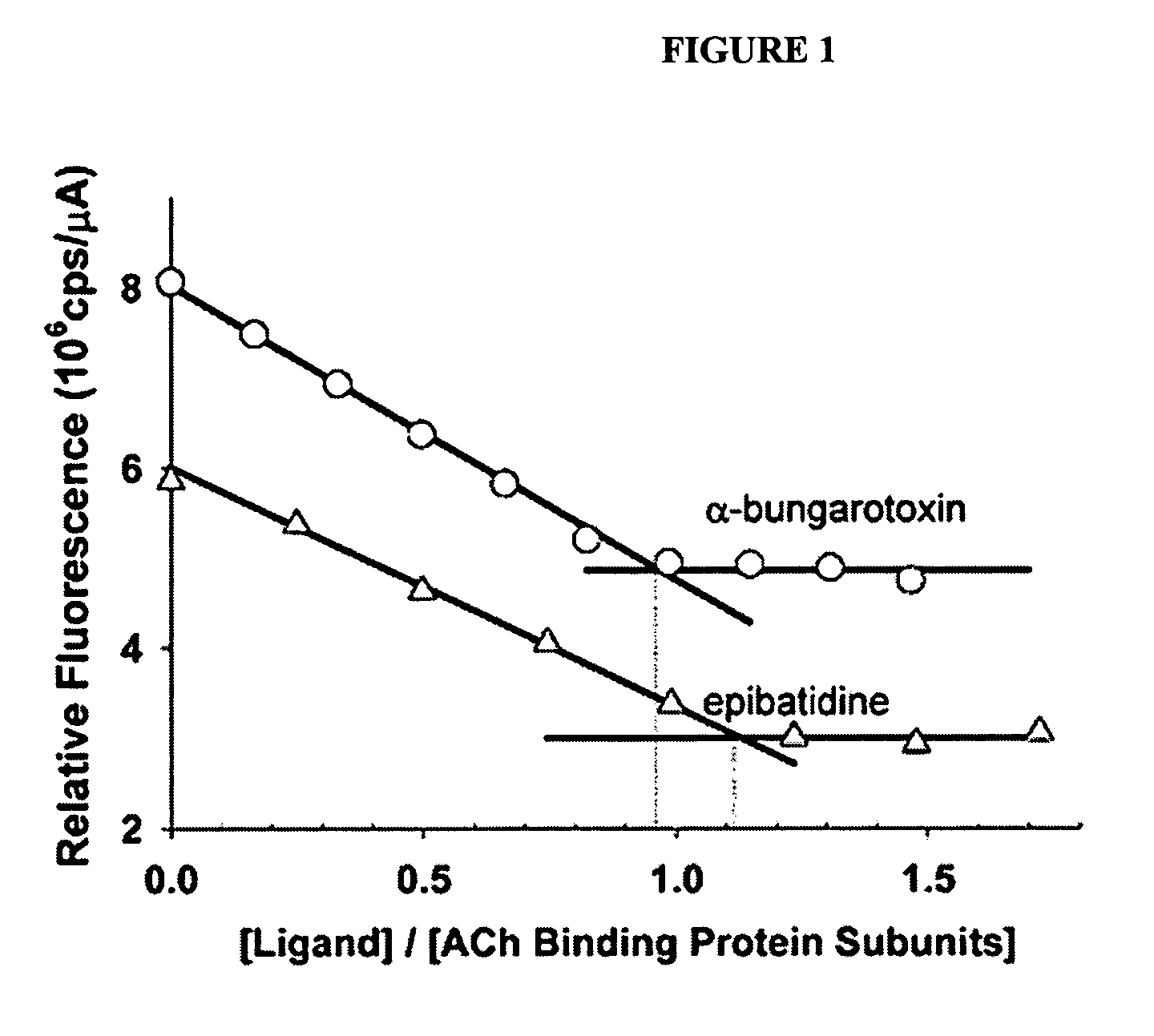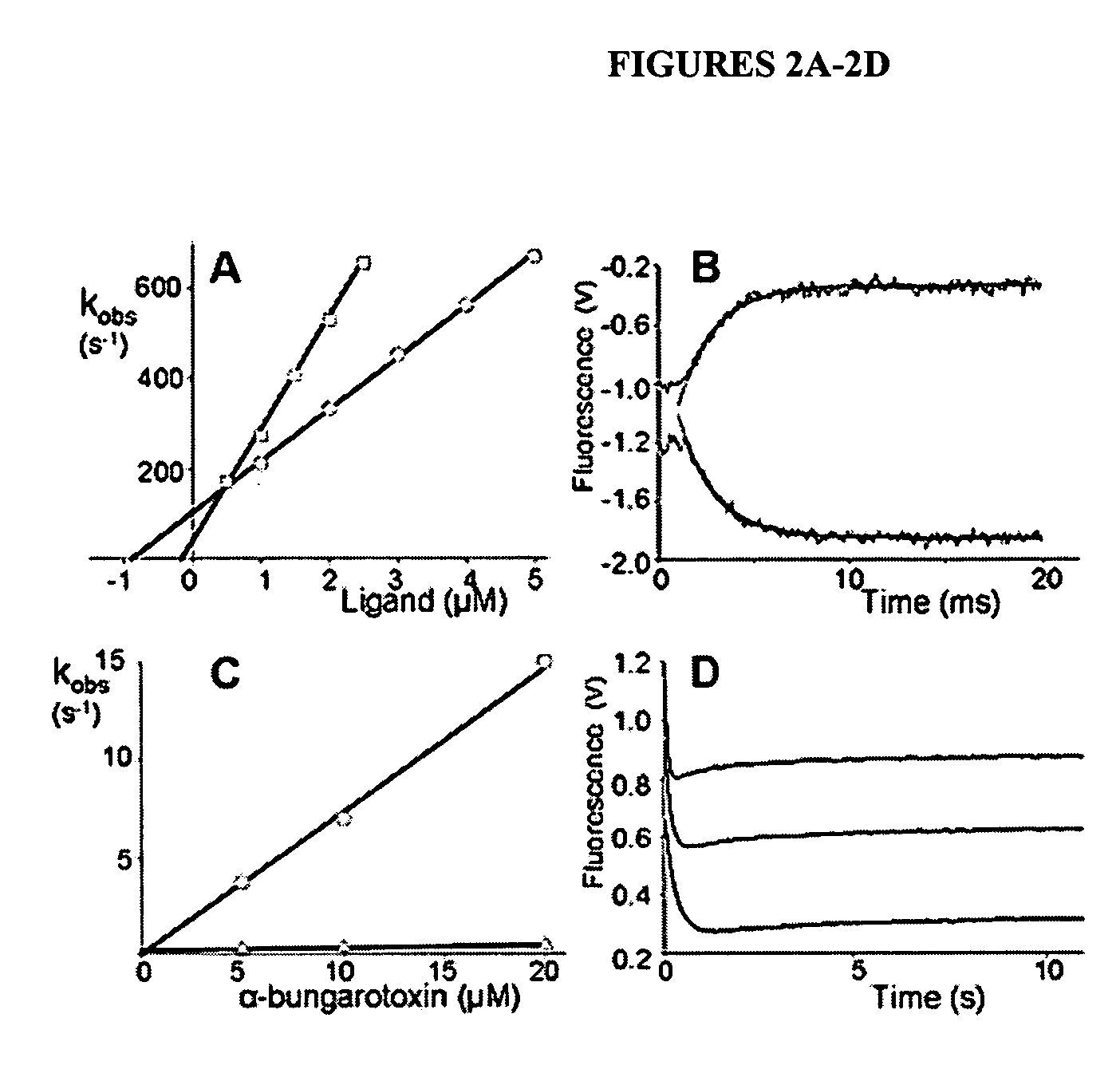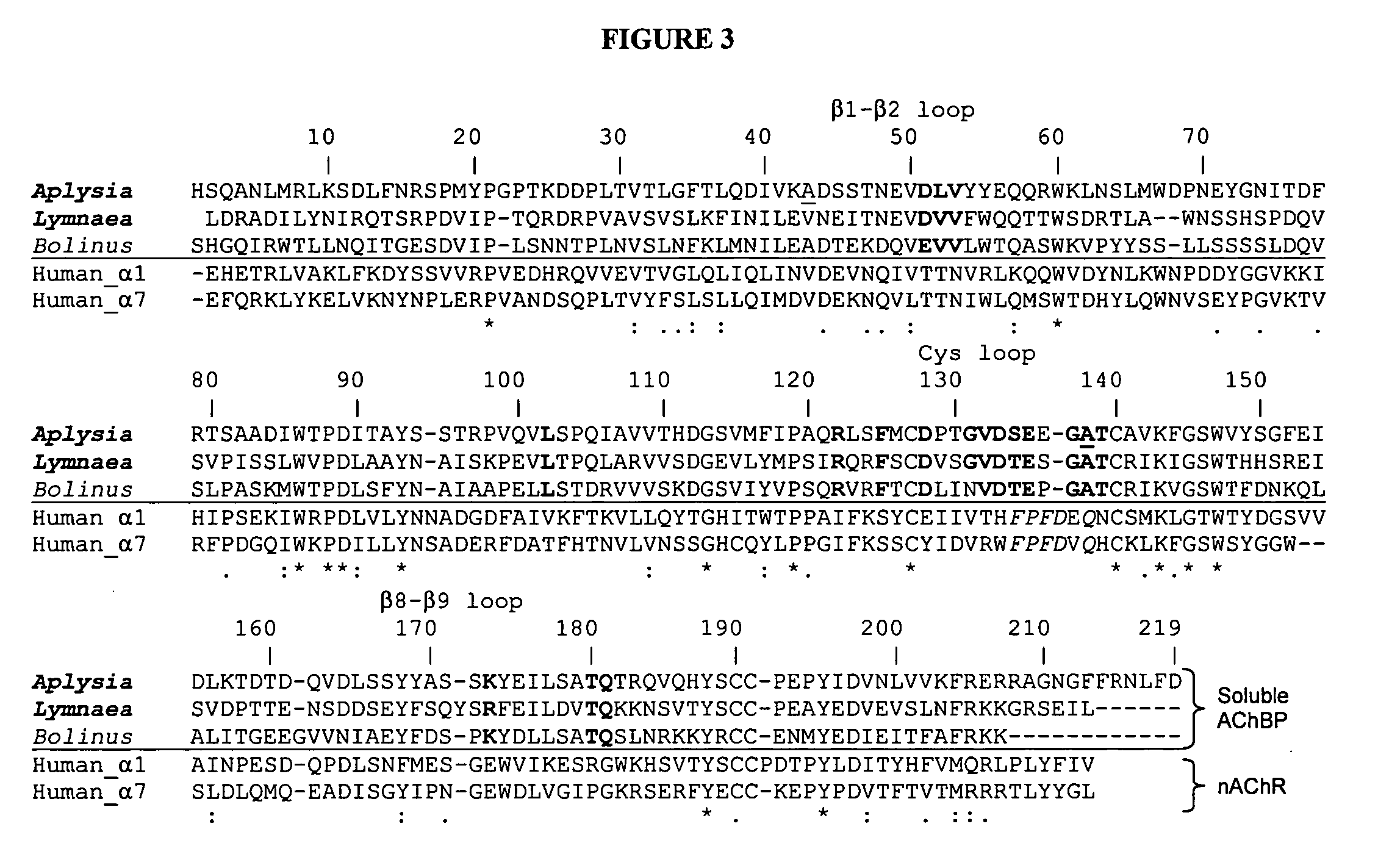Acetylcholine binding protein, and methods of identifying agents that modulate acetylcholine receptor activity
a technology of acetylcholine receptor and binding protein, which is applied in the field of acetylcholine binding protein and methods of identifying agents that modulate acetylcholine receptor activity, can solve the problems of limited number of drugs available for modulating pentameric, transmembrane bound proteins, and inability to adapt easily, and achieve high throughput
- Summary
- Abstract
- Description
- Claims
- Application Information
AI Technical Summary
Benefits of technology
Problems solved by technology
Method used
Image
Examples
example 1
Ligand Binding to an Acetylcholine Binding Protein is Detectable by Monitoring Tryptophan Fluorescence
[0092] This Example demonstrates that ligand binding to an AChBP results in detectable changes in tryptophan fluorescence by the AChBP.
[0093] The characterization of an AChBP from the fresh water snail, Lymnaea stagnalis, showed it to be a structural homolog of the extracellular domain of nAChRs. To ascertain whether the AChBP exhibits the recognition properties and functional states of an nAChR, the protein was expressed in milligram quantities from a synthetic cDNA transfected into human embryonic kidney (HEK) cells. The protein secreted into the medium showed a pentameric rosette structure with ligand stoichiometry approximating five sites per pentamer. Binding of acetylcholine, selective agonists, and antagonists ranging from small alkaloids to larger peptides results in substantial quenching of the intrinsic tryptophan fluorescence. Using stopped-flow techniques, rapid rates ...
example 2
Structural and Ligand Recognition Characteristics of Aplysia Acetylcholine Binding Protein
[0107] This Example describes the generation of an AChBP from Aplysia californica by synthesis of a cDNA present in a database, and expression of the AChBP in mammalian cells in culture.
[0108] Secreted Lymnaea and Aplysia AChBPs were purified by elution from columns of attached antibodies directed to the FLAG epitope encoded in the expression construct. Although the sequences of the two proteins from marine and fresh water mollusks exhibit the characteristic features of the extracellular domain of the nicotinic receptor, they only possess 33% amino acid identity. Both assemble as stable pentamers with five binding sites per pentamer, yet they show distinguishing features of stability and sensitivity to epitope tag placement. Both proteins exhibit changes in tryptophan fluorescence upon ligand binding, however the magnitude of the changes differs greatly. Moreover, certain ligands showed marke...
PUM
| Property | Measurement | Unit |
|---|---|---|
| Molar density | aaaaa | aaaaa |
| Nanoscale particle size | aaaaa | aaaaa |
| Solubility (mass) | aaaaa | aaaaa |
Abstract
Description
Claims
Application Information
 Login to View More
Login to View More - R&D
- Intellectual Property
- Life Sciences
- Materials
- Tech Scout
- Unparalleled Data Quality
- Higher Quality Content
- 60% Fewer Hallucinations
Browse by: Latest US Patents, China's latest patents, Technical Efficacy Thesaurus, Application Domain, Technology Topic, Popular Technical Reports.
© 2025 PatSnap. All rights reserved.Legal|Privacy policy|Modern Slavery Act Transparency Statement|Sitemap|About US| Contact US: help@patsnap.com



